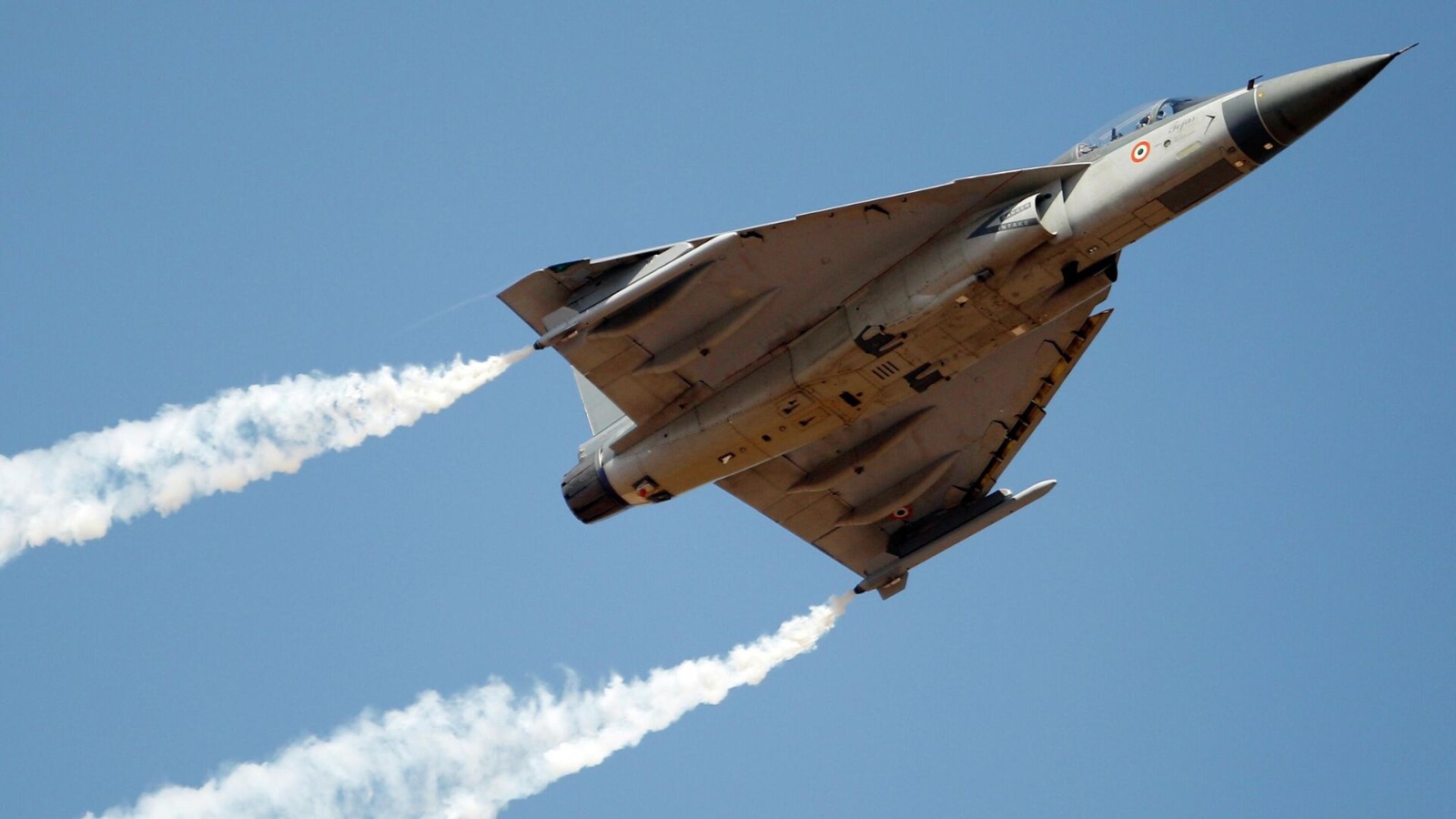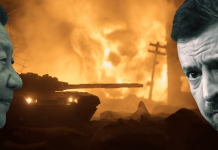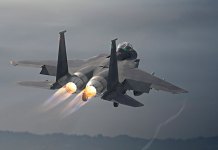By Ritu Sharma
The delay in the supply of engines by American engine manufacturer GE Aerospace has sent the delivery schedule of India’s indigenous Light Combat Aircraft (LCA) MK1A fighters in a tizzy.
This happened at a time when the number of fighter squadrons of the Indian Air Force (IAF) is alarmingly low.
Now, GE Aerospace is expected to deliver 12 F-404 engines for the Indian homegrown fighter jet this financial year.
Indian aircraft maker Hindustan Aeronautics Limited (HAL) has displayed four LCA MK1A fighters at the ongoing Aero India 2025. The LCA MK1A conducted the opening of Aero India, touted as one of the largest air shows in Asia.
Addressing a press conference at Aero India, Dr. DK Sunil, the Chief Managing Director of HAL, said, “GE has sorted the supply chain issue. The first engine is expected by March.” So far, HAL has been manufacturing the airframe, and the three LCA MK1As that flew at Aero India are powered by Category B engines. These are the engines left from a prior deal with GE Aerospace.
The HAL aims to deliver the 83 LCA MK1A aircraft ordered by the IAF in the first tranche in three and a half years. It is also in the final stages of signing the contract for a further 97 LCA MK1A with the IAF, and delivery of these 97 aircraft is expected to be completed by 2031.
Dr Sunil added, “GE Aerospace is expected to deliver the 12 engines in this financial year. (In the meantime) Aerostructures are built, and with CAT B engines, we are able to fly them.”
A GE Aerospace official confirmed to the EurAsian Times that the supply chain issues that have arisen from the lockdown caused in the aftermath of the COVID pandemic had been resolved. The delivery of the engines for LCA MK1A is expected to go as scheduled.
The delay in engine supply pushed back the delivery schedule of LCA MK1A by a year.
In 2021, HAL inked a contract with GE Aerospace for the supply of 99 F404 engines valued at US$716 million. Delivery was scheduled to begin in March 2023, in accordance with HAL’s goal of delivering 16 aircraft per year.
During Prime Minister Narendra Modi’s visit to Washington in 2023, the two countries inked a contract to manufacture 98 kilo-newton thrust GE-414 engines to power the LCA MK II.
LCA will be the mainstay of the IAF’s fleet. The HAL has set up three manufacturing lines (two in Bangalore and one in Nasik) to deliver 24 aircraft per year.
The HAL Chief further stated that the private sector has also been co-opted and can deliver 10 aircraft annually if required.
However, the IAF Chief has expressed his lack of confidence in HAL.
“I can only tell you what our requirements and our worries are. You have to alleviate those worries and make us more confident. At the moment, I am just not confident of HAL, which is a very wrong thing to happen,” a visibly annoyed IAF Chief said to HAL Chairman Dr. Sunil.
The six-and-a-half minute video posted by defense news portal NationalDefence on its YouTube channel appears to have been filmed while the IAF chief was getting a brief while seated in the cockpit of an HJT-36 Yashas.
“HAL is our company; we have all worked there. But I find that HAL is just not in mission mode,” said the IAF chief. “I was promised that when I come here in February, 11 Tejas Mk1As would be ready. And not a single one is ready.”
The IAF chief further chastised HAL by pointing out that the LCA Tejas Mk1A jets showcased at the Aero India 2025 show are not Mk1A jets.
“The aircraft that you flew, calling it Mk1A. It is not an Mk1A. It cannot happen just by change of one software or by looks. When the weapons come, and the capability comes, then it’s a Mk1A,” the IAF chief can be seen saying.
The IAF chief has been quite vocal about the delay in manufacturing the aircraft, which has resulted in the force being down to 31 fighter squadrons against the sanctioned strength of 42.

Maturing Of LCA
The IAF inducted two squadrons of LCA in 2016. After final operational clearance, the aircraft was deployed in Sulur.
The aircraft has now started operating from forward bases and participating in international exercises, reflecting the confidence of the Indian establishment in the indigenous jet.
In 2024, LCA Tejas Mk1A, the advanced variant of the already inducted LCA Mk1, took to the skies, and the IAF placed one of the biggest defense orders for 83+97 of these fighter jets.
IAF, the fourth largest air force in the world, will soon operate around 350 LCAs (Mk-1, Mk-1A and Mk-2 variants). The force has already inducted 32 Mk1 (it has placed an order for 40 Mk-1 jets) and has placed an order for 83+97 of the Mk1A version.
In the coming decade, the IAF, grappling with a shortage of fighter jets, will have the homegrown LCA as the cornerstone of its combat power. The fighter jet will be equipped with Indian-built weapons.
Despite the delays in the delivery, HAL said that the USP of the aircraft is that apart from the engine, everything is sourced domestically. “We have complete ITR and software control. So we can integrate weapons and radars of our choice,” the HAL Chief added.
LCA MK1A Features
The Mk1A variant incorporates modern avionics, including an active electronically scanned array (AESA) radar, an improved electronic warfare suite, and advanced sensors. AESA radar systems can scan and track targets almost instantaneously because they can generate multiple beams simultaneously.
This allows for improved situational awareness and faster response times in detecting and tracking multiple targets, reducing the likelihood of targets being missed or lost during high-speed or maneuvering scenarios.
The payload capacity has been enhanced, and Mk1A can carry a variety of air-to-air and air-to-ground munitions, including missiles, bombs, and rockets.
Certain design changes have improved the aircraft’s maneuverability. The LCA Tejas Mk1A features enhanced agility and better control surfaces for dogfighting and close combat.
The Indian fighter jet can carry air-to-air missiles like Astra (India’s first indigenous BVR), Derby (a medium-range BVR), and Python missiles. For air-to-ground weapons, it can carry precision-guided bomb Paveway, unguided rockets, and other precision-guided munitions.




